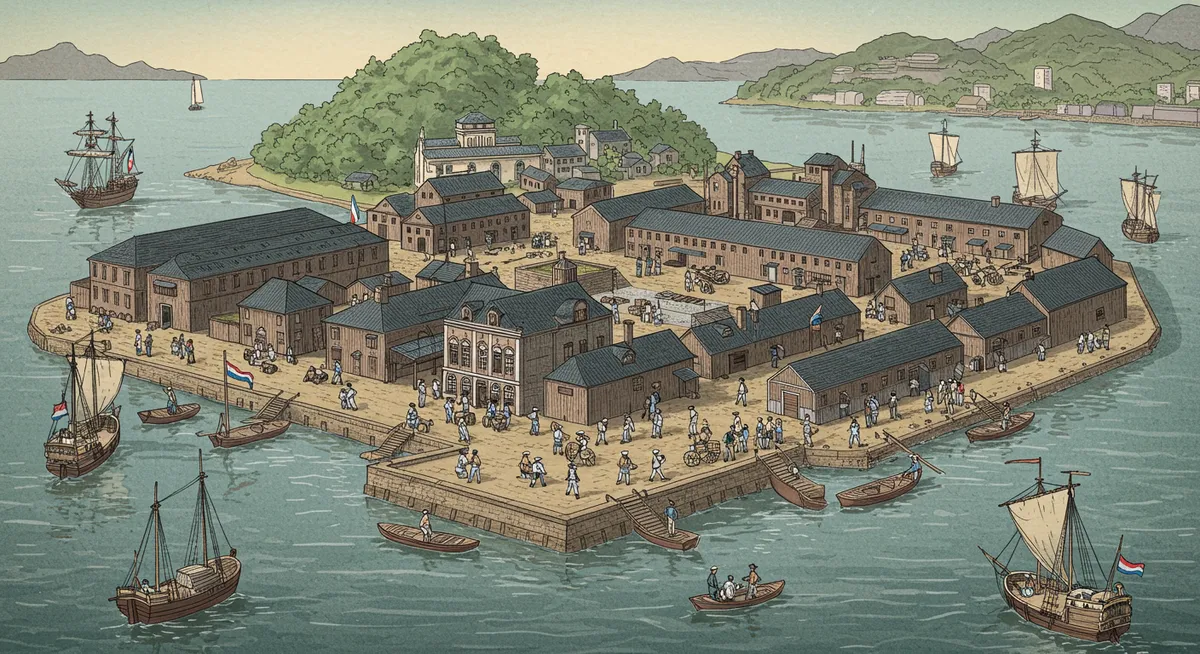
Dejima Nagasaki: Japan's Historic Trading Post
Table of Contents
Want to find the best travel deals for this destination? Chat with our travel hacking specialist!
Get Travel HacksCategory: dejima-nagasaki-historic-dutch-trading-post
Discovering Dejima Nagasaki: A Window into Japan's Past
Having personally walked the reconstructed streets of Dejima Nagasaki, I can attest to its profound significance. This historic Dutch trading post stands as a vivid testament to Japan's unique period of isolation, offering an unparalleled glimpse into a time when foreign interaction was strictly limited. Prepare to step back in time and uncover the fascinating layers of history that shaped Nagasaki's relationship with the outside world.What is Dejima? A Glimpse into Japan's Isolation
Dejima Nagasaki, a man-made island built in 1636, served as Japan's sole direct link to the Western world for over two centuries during the Edo period. This historic Dutch trading post was initially constructed for Portuguese traders but later housed the Dutch East India Company. As an avid history enthusiast, I find its meticulously reconstructed buildings incredibly captivating. The island was a crucial conduit for global knowledge, trade, and cultural exchange, defying Japan's strict isolationist policy, or sakoku. Visiting Dejima allows you to truly grasp the confined yet vital space where European influence subtly entered the country. Learn more about its unique role in the broader context of a Nagasaki travel guide.
Exploring Dejima's Historic Residences and Warehouses
Stepping onto Dejima feels like entering a living museum. You can explore a variety of meticulously restored structures, including the Chief Factor's Residence, various warehouses, and the medical clinic. These buildings showcase the daily lives of both the Dutch traders and their Japanese counterparts. Walking through the former offices and living quarters provides a tangible sense of the past. My personal highlight was seeing the historical artifacts, like old maps and scientific instruments, which reveal how cutting-edge knowledge arrived here. The effort put into recreating the authentic atmosphere of this historic Dutch trading post is truly impressive, offering a deep dive into its fascinating heritage. Discover more top things to do in Nagasaki.
Dejima's Cultural Exchange: Art, Science, and Cuisine
Beyond trade, Dejima Nagasaki was a vibrant hub for cultural exchange, profoundly impacting Japan's development. Here, Western art, medicine, and science were introduced, leading to significant advancements during the Edo period. The Dutch residents, though confined, brought with them a world of knowledge that subtly permeated Japanese society. You can witness exhibitions detailing these exchanges, from anatomical drawings to botanical illustrations. My visits consistently remind me how vital this small island was for Japan's intellectual curiosity. The historical significance of this historic Dutch trading post cannot be overstated, influencing everything from cartography to carpentry across the nation. For a comprehensive trip, consider a Nagasaki itinerary for 3 days.
Planning Your Visit to Dejima: Practical Tips
Visiting Dejima is a rewarding experience, best enjoyed with a bit of planning. The site is easily accessible by tram from central Nagasaki, making it a convenient stop. Allow at least 2-3 hours to fully explore the numerous buildings and exhibitions. Consider visiting during the shoulder seasons, like spring or autumn, for pleasant weather and fewer crowds, based on my past experiences. The entrance fee is reasonable, and audio guides are available to enrich your understanding of this historic Dutch trading post. Remember to wear comfortable shoes, as there's plenty of walking. For optimal comfort and fewer crowds, checking the best time to visit Nagasaki is highly recommended.
Frequently Asked Questions
Why was Dejima important to Japan?
What can I see at Dejima today?
Dejima Nagasaki stands as a powerful symbol of Japan's fascinating history, a unique blend of isolation and quiet international engagement. This historic Dutch trading post offers more than just reconstructed buildings; it provides a tangible connection to a pivotal era that shaped modern Japan. By exploring its grounds, you truly appreciate the strategic significance of this small island. Don't miss the opportunity to step back in time and witness this extraordinary piece of global history firsthand. For more insights on exploring Japan's rich heritage, visit PlanVacationAsia.com.